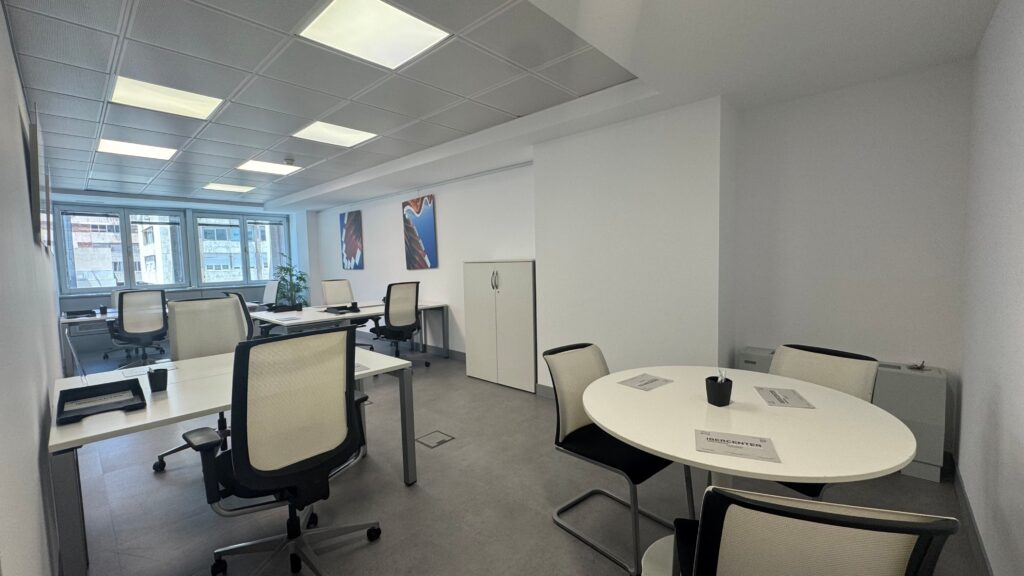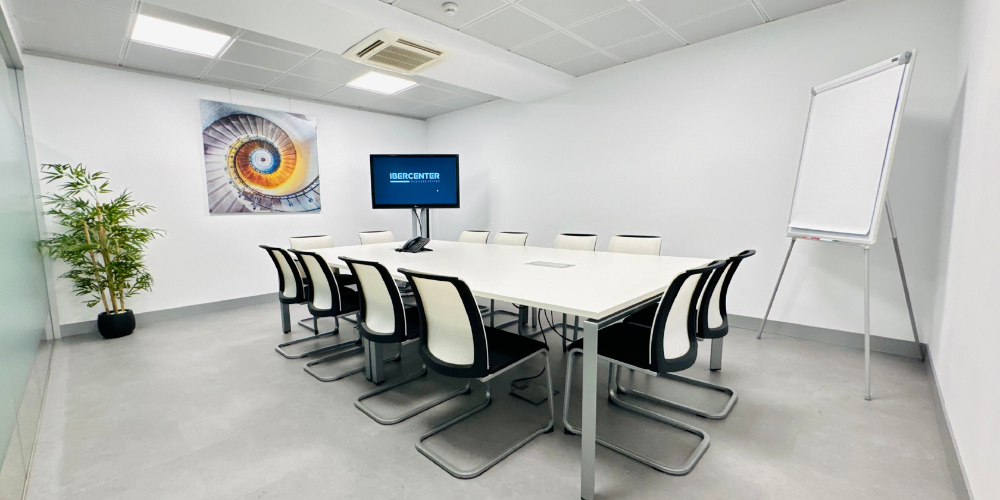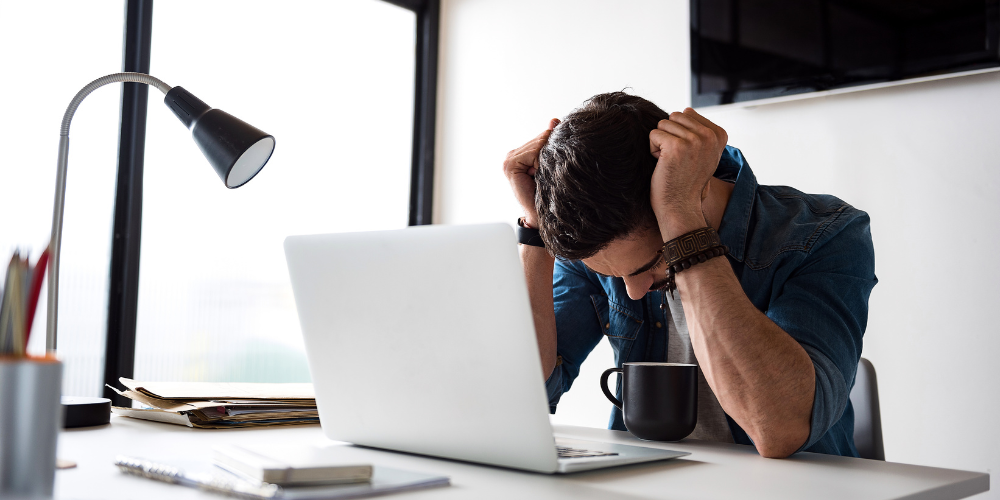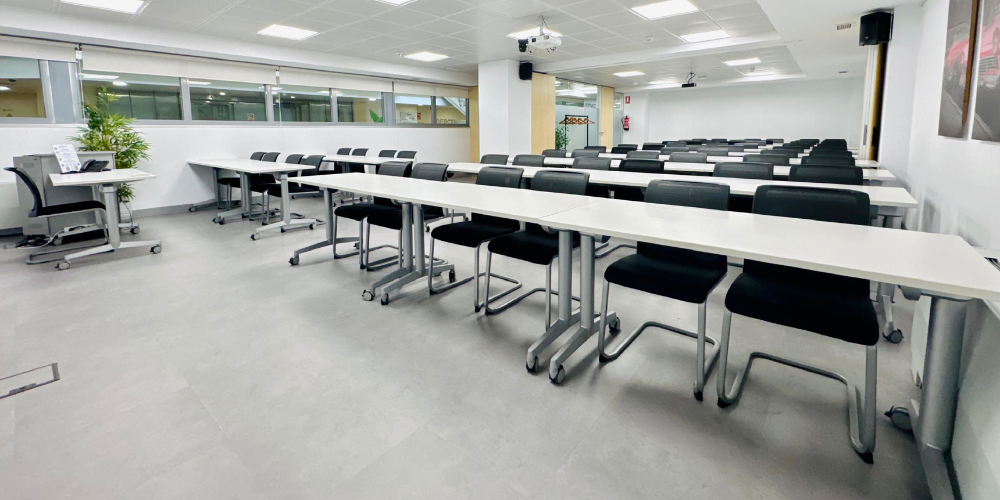Here are some tips on how to choose the best furniture for your office.
Choosing the best furniture for your office involves much more than just selecting aesthetically appealing pieces. In fact, ergonomics plays a fundamental role: for example, a suitable chair can reduce the probability of suffering back pain by up to 30%, according to studies by the Spanish Ergonomics Association. In addition, the layout of the furniture influences the efficiency and well-being of the team, factors that in offices with less than ten employees can increase productivity by up to 15%.
It’s not just about spending more, it’s about investing in quality and functionality. Durable materials such as solid wood or steel finishes provide robustness while maintaining the current design, helping to preserve a professional image without the need for constant renovation. Modularity should also be considered, especially in small spaces or dynamic working environments, where adaptable furniture facilitates rearrangement and saves costs in the long run.
From our coworking centre in Madrid we want to share tips and tricks so that your day-to-day work is not annoying, don’t miss out!

The psychology of the efficient workspace
Creating a work environment that maximises your performance depends not only on the furniture itself, but also on how the space feels on a psychological level. Neuroscience studies applied to design show that the emotional well-being generated by a well thought-out space can increase concentration and reduce mental fatigue.
Tidy spaces, with clean lines and ergonomic elements, can help keep your mind clearer and more focused on your tasks, while too much visual stimuli or poorly placed furniture can create unnecessary distractions and tension.
In addition, the perception of control over your environment, such as adjusting table distance or chair orientation, contributes to a higher level of job satisfaction. As the design adapts to your actual needs, you not only improve your posture and physical comfort, but also your motivation and attitude towards work. That’s why functional and flexible furniture becomes an essential ally in boosting your daily productivity.
For all these reasons, our offices in Madrid have a layout, environment and furniture designed to improve business performance.
How colours and light influence productivity?
The colour of the walls, furniture or objects you choose for your office has a direct impact on your mood and therefore your performance. Shades such as blue and green are associated with a sense of calm and concentration, while colours such as yellow or orange can stimulate creativity and energy, ideal in brainstorming areas or shared spaces.
However, the key lies in balance: use these colours in the right proportions to avoid overstimulation and promote mental stability.
Lighting, on the other hand, plays a fundamental role in how you perceive the space and the visual fatigue you experience during your day. Natural light is undoubtedly the best for maintaining your attention levels and avoiding headaches. In the absence of natural light, opt for LED lamps with a cool colour temperature that mimics daylight to reduce drowsiness. Adjusting the intensity and direction of the light avoids annoying reflections on screens or surfaces, improving your visual comfort and thus your work efficiency.
The importance of furniture layout
Arranging your furniture strategically makes the difference between a chaotic space and one that really supports your workflow. Positioning your desk facing the door, for example, can give you a sense of security and control, while keeping a clear space in front of you makes it easier to concentrate. Grouping nearby storage areas and technology equipment together avoids frequent interruptions and speeds up access to what you need, reducing downtime.
The layout of the furniture should also consider the circulation routes so that you don’t encounter obstacles at the busiest times. A layout that facilitates fluid movement not only helps to avoid physical injury but also reduces stress from spatial discomfort. Modular and adaptable furniture fits easily into different office formats, allowing you to optimise both large and small office spaces effectively.
Extending this idea, the intelligent layout takes advantage of dead spaces or corners that are usually unused, transforming them into useful areas such as filing points or short break areas. It also takes individual ergonomics into account, allowing customised adjustments to suit your specific needs during each stage of the day. Designing with function and accessibility in mind is key to creating a streamlined, comfortable working environment that translates into tangible performance improvements.
The importance of materials
When choosing furniture for your office, the decision between investing in quality or saving money can have a significant impact on the durability and functionality of the furniture. While it may be tempting to opt for cheaper options, higher quality materials tend to stand up better to everyday wear and tear, especially in demanding professional environments.
For example, an office desk with a solid wood top can last more than ten years without losing stability, whereas one made of chipboard or MDF often shows signs of deterioration after only a few years. Given this longevity, your initial investment can be much more cost-effective if you prioritise quality.
Another consideration is that low-quality furniture not only wears out quickly, but also often requires frequent repairs, which generates additional costs in the long run. Materials such as metal for structures or resistant fabrics for chairs not only improve ergonomics but also contribute to a more aesthetically pleasing and comfortable professional space.
Furthermore, if you opt for room rental in Madrid at our centres, you will have spaces already equipped with high quality furniture, designed to offer comfort, image and functionality from the very first day. This way, you can focus on what is important: growing your business without worrying about logistical details.
Comparison of different materials and their durabilities.
You have several material options that offer different levels of strength and appearance. Here is a table summarising the most common ones with their main characteristics, to help you assess which one might be the best fit for your office.
| Material | Durability and Features |
| Solid Wood | High durability, wear resistance, elegant and renewable appearance with sanding and varnishing. |
| MDF and chipboard | More economical, good initial appearance but less resistant to humidity and shocks; tendency to deform. |
| Metal (Structure) | Very resistant and stable, ideal for supporting heavy weight and intense use; Requires maintenance to prevent rust. |
| Plastic and melamine | Easy to clean and lightweight, suitable for secondary furniture; Less robust and susceptible to scratches. |
| Upholstery in technical fabrics | High durability, resistant to stains and wear, promote comfort and facilitate cleaning. |
Ergonomics, the key to health
A well-designed office can make all the difference to your daily well-being. Ergonomics is concerned with adapting furniture and space to the physical characteristics of each person to avoid tension and ailments. In the case of workers who spend long hours at the computer, the choice of ergonomic elements can reduce musculoskeletal problems by 25%, according to studies by the Spanish Quality Foundation. In fact, small adjustments such as the correct seat height or backrest position have a direct impact on your posture and level of fatigue.
Ergonomic design not only prevents injuries but also improves your concentration and productivity. A comfortable environment allows you to stay focused for longer and reduces the feeling of exhaustion. That’s why integrating furniture adapted to your body and habits should be a priority in your office to safeguard your physical health in the medium and long term.
Furniture that promotes physical well-being
Opting for furniture with adaptive shapes, breathable materials and customisable settings contributes to your physical well-being. For example, chairs with an adjustable lumbar backrest and depth-adjustable seat allow you to keep your spine in its natural position, preventing back pain. In addition, using tables with variable height helps you alternate between sitting and standing positions, which improves circulation and reduces leg strain.
Smooth surfaces and rounded edges protect against unintentional scratches or bumps, minimising discomfort during work. Also recommended are the footrests and armrests, which relieve the load on the lower and upper limbs, respectively, and create a relaxed posture, preventing frequent contractures.
How to choose chairs and desks that prevent injuries?
It is essential that the chair has a seat width of at least 45 cm and a backrest that supports the lumbar region, as this region is one of the most vulnerable to injury in office environments. Desks should allow legroom of at least 60 cm in height and 40 cm in depth, facilitating varied postures without straining any joints. In addition, electrically height-adjustable surfaces simplify postural changes throughout the day.
Another essential aspect is that the seat allows your feet to rest on the floor or on a footrest, and that your forearms are parallel to the floor while using the keyboard or mouse. According to data from the National Institute for Safety and Health at Work (INSST), a poor choice of furniture can increase the risk of suffering musculoskeletal disorders by up to 40%.
When choosing a chair, look for certified models that include EN 1335 certification, a guarantee that they mention specific ergonomic requirements for office work. For desks, options with smooth adjustment mechanisms and height memory make it easier to maintain healthy postures without interruption. The right combination of these elements is the best way to minimise any physical damage from prolonged work.
Creating an Inspiring Environment
Office design not only influences the first impression your visitors receive, but also directly affects the motivation and efficiency of those who work there. Opt for furniture that combines clean lines and natural materials, such as wood and metal, to create a modern and welcoming atmosphere. Light colours, such as off-white or pastel tones, visually enlarge the space and provide luminosity, while green details, through plants or textiles, improve the feeling of well-being and concentration.
Furthermore, carefully designed offices encourage creativity and a sense of belonging. Choose pieces that can be adapted to different areas and activities: ergonomic chairs for the workstation, modular desks that facilitate collaboration and open shelves that add order without detracting from the freshness of the environment. A space designed with aesthetics and functionality in mind reflects the value you place on work and the team.
Current trends in office design
In recent years, trends have moved towards more versatile and sustainable spaces. The integration of multifunctional areas allows you to quickly change the use of furniture according to the needs of the moment, ideal for informal meetings, individual work or creative sessions. Height-adjustable furniture and sit-stand desks are on the rise, promoting postural health and combating sedentary lifestyles without sacrificing aesthetics.
On the other hand, biophilic design has gained prominence thanks to its ability to connect people with nature. Incorporating elements such as vertical gardens, maximised natural light and recycled materials not only reduces environmental impact but also improves productivity and job satisfaction. Recent studies show that offices with plants and good natural lighting can increase performance by up to 15%.
Balance between functionality and style
To achieve an office that you like visually and, at the same time, facilitates your daily routine, you need to select furniture that fulfils both functions without sacrificing either. The key is to prioritise ergonomics and comfort without sacrificing design. For example, a chair that adjusts height, backrest and seat depth will provide long-term comfort, but if it also has a matt fabric finish and neutral colours, it will fit in perfectly with any decorative style.
The choice of cabinets and tables also plays a key role. Ideally, opt for solutions that help keep everything organised, with integrated drawers or shelves, to avoid visual clutter that has a negative impact on concentration. Multi-purpose or modular furniture can be stylish and practical at the same time, adapting to the dimensions of your space and your specific needs.
Don’t forget that the balance between functionality and style is also reflected in the details: minimalist handles, matt or textured finishes and furniture with simple lines contribute to a harmonious environment, where working is pleasant and efficient. In this way, each piece can add value without cluttering the room or sacrificing usable space.
Conclusion
In the end, your choice of office furniture should reflect both the functionality and aesthetics you want to convey. For example, investing in an ergonomic chair such as the Herman Miller Aeron, world-renowned for its design and lumbar support, can make all the difference to daily productivity and long-term postural health. In addition, opting for sturdy, easy-to-maintain materials such as solid wood or matte-finished steel ensures durability that justifies the initial outlay and reduces the need for frequent replacements.
Remember that well-chosen furniture not only improves your workspace but also influences the professional image you project to clients and colleagues. Recent studies have shown that well-designed office environments increase motivation and creativity by up to 20%. Therefore, optimising every detail from desk type to storage solutions can become an investment that translates into better results and overall well-being.
Flexible offices in Madrid | Room rentals in Madrid




